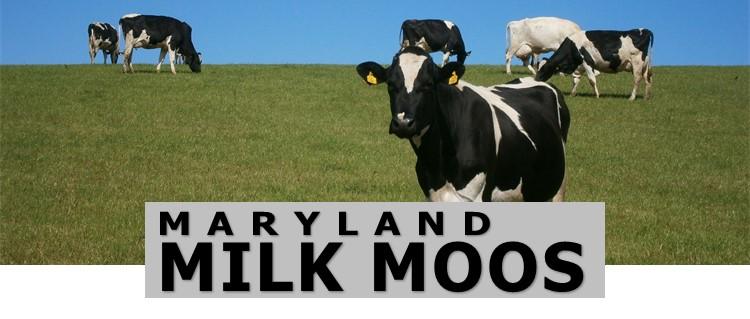
March 10, 2022 | Volume 3, Issue 1
Welcome
Spring is finally here! Although recent high milk prices are much welcomed, most are acutely aware that input costs have also increased substantially as feed, fuel, and fertilizer prices are at record highs. At the national level, these high input costs, coupled a substantially low replacement heifer inventory, are predicted to moderate the traditional response of expansion and increased milk production that often follows a time of high milk prices. This will hopefully prolong the period of these higher milk prices. However, the last few years have taught us lessons in market volatility, so don’t take anything for granted. If you haven’t already, consider signing up for the Dairy Margin Coverage Program—the deadline has been extended to March 25th, 2022. Contact your local FSA Office for more information.
In this issue, we focus on milk fever, subclinical mastitis, and forage sorghum. Please contact me if you have any comments, questions, or suggestions (sbpotts@umd.edu; 301-432-2767 ext. 324).
Upcoming educational opportunities that may be of interest are listed on page 13. Additional resources can be found on our extension page: go.umd.edu/dairyextension.
Best Regards,
Sarah Potts Extension Specialist, Dairy & Beef

Milk Fever Prevention Begins Before Calving
By Sarah Potts, Ph.D. Extension Specialist, Dairy & Beef
Hypocalcemia, or milk fever, occurs when there is not enough calcium in the blood to meet demand. Normal blood calcium levels are between 8.5 and 10 mg/dL and are maintained at those levels through a balance between dietary absorption, bone demineralization, and urinary excretion. After calving, the calcium requirement of...Read more
Subclinical Mastitis: The Stealthy Intruder
By Sarah Potts, Ph.D. Extension Specialist, Dairy & Beef
Regardless of their operation demographics, all dairy producers strive to produce high quality milk. Many factors contribute to milk quality, including fat and protein content, cleanliness, and somatic cell count (SCC).
Somatic cell count is a major indicator of milk quality, and many processers incentivize their producers for low...Read more


Forage Sorghum as an Alternative Silage Crop
By Amanda Grev, Ph.D. Extension Specialist, Pasture & Forages
There’s no question that the use of forage sorghum, sorghum-sudangrass, and sudangrass has become more popular as a warm-season annual forage resource. These species can offer exceptional performance and forage yield during the summer months. Similarly, forage sorghum and its associated...Read more


Events & Announcements
- Dairy Margin Coverage Sign-up Deadline - March 25th. Visit your local FSA office for more information.
- Solar Workshops (in-person) - March 23rd, March 30th, April 6th, April 13th, April 20th, April 28th. Held at various locations throughout Maryland. Visit https://extension.umd.edu/resource/solar-workshops-2022 for more information.
- Mid-Atlantic Women in Agriculture Wednesday Webinar: Who’s Going to Take Over the Farm Operation? - March 23rd @12 pm. Visit https://universityofextension.eventbrite.com/ for more information and to register.
- Novel Tall Fescue Renovation Workshop (in-person) - March 30th. This event will take place at the Western Maryland Research and Education Center in Keedysville, MD from 8 am to 4 p.m. Visit http://tallfescuemd2022.eventbrite.com for more information and to register.
- Online Private Pesticide Applicator Recertification Training - April 5th @6:30 pm. Visit https://extension.umd.edu/locations/anne-arundel-county/agriculture-food-systems/upcoming-programs for more information.
- Mid-Atlantic Women in Agriculture Wednesday Webinar: Considerations for Selecting and Purchasing Hay - May 11th @12 pm. Visit https://universityofextension.eventbrite.com/ for more information and to register.
- Maryland Beef Webinar Series: Interpreting a Forage Analysis - June 14th, 2022 @7:30 pm. Visit https://go.umd.edu/2022-beef-webinar-forage-analysis to register.
Maryland Milk Moos is a quarterly newsletter published by the University of Maryland Extension that is focused on dairy topics related to Nutrition and Production, Herd Management, and Forage Production. To view previous editions click here...
Comments and suggestions regarding the newsletter are always welcome. References to commercial products or trade names are made with the understanding that no discrimination is intended and no endorsement by the University of Maryland Extension is implied. Articles and photographs may be reprinted with permission.
Want to subscribe? Click the button and enter your contact information.
 English
English العربية
العربية Български
Български 简体中文
简体中文 繁體中文
繁體中文 Hrvatski
Hrvatski Čeština
Čeština Dansk
Dansk Nederlands
Nederlands Suomi
Suomi Français
Français Deutsch
Deutsch Ελληνικά
Ελληνικά हिन्दी
हिन्दी Italiano
Italiano 日本語
日本語 한국어
한국어 Norsk bokmål
Norsk bokmål Polski
Polski Português
Português Română
Română Русский
Русский Español
Español Svenska
Svenska Català
Català Filipino
Filipino עִבְרִית
עִבְרִית Bahasa Indonesia
Bahasa Indonesia Latviešu valoda
Latviešu valoda Lietuvių kalba
Lietuvių kalba Српски језик
Српски језик Slovenčina
Slovenčina Slovenščina
Slovenščina Українська
Українська Tiếng Việt
Tiếng Việt Shqip
Shqip Eesti
Eesti Galego
Galego Magyar
Magyar Maltese
Maltese ไทย
ไทย Türkçe
Türkçe فارسی
فارسی Afrikaans
Afrikaans Bahasa Melayu
Bahasa Melayu Kiswahili
Kiswahili Gaeilge
Gaeilge Cymraeg
Cymraeg Беларуская мова
Беларуская мова Íslenska
Íslenska Македонски јазик
Македонски јазик יידיש
יידיש Հայերեն
Հայերեն Azərbaycan dili
Azərbaycan dili Euskara
Euskara ქართული
ქართული Kreyol ayisyen
Kreyol ayisyen اردو
اردو বাংলা
বাংলা Bosanski
Bosanski Cebuano
Cebuano Esperanto
Esperanto ગુજરાતી
ગુજરાતી Harshen Hausa
Harshen Hausa Hmong
Hmong Igbo
Igbo Basa Jawa
Basa Jawa ಕನ್ನಡ
ಕನ್ನಡ ភាសាខ្មែរ
ភាសាខ្មែរ ພາສາລາວ
ພາສາລາວ Latin
Latin Te Reo Māori
Te Reo Māori मराठी
मराठी Монгол
Монгол नेपाली
नेपाली ਪੰਜਾਬੀ
ਪੰਜਾਬੀ Afsoomaali
Afsoomaali தமிழ்
தமிழ் తెలుగు
తెలుగు Yorùbá
Yorùbá Zulu
Zulu ဗမာစာ
ဗမာစာ Chichewa
Chichewa Қазақ тілі
Қазақ тілі Malagasy
Malagasy മലയാളം
മലയാളം සිංහල
සිංහල Sesotho
Sesotho Basa Sunda
Basa Sunda Тоҷикӣ
Тоҷикӣ O‘zbekcha
O‘zbekcha አማርኛ
አማርኛ Corsu
Corsu Ōlelo Hawaiʻi
Ōlelo Hawaiʻi كوردی
كوردی Кыргызча
Кыргызча Lëtzebuergesch
Lëtzebuergesch پښتو
پښتو Samoan
Samoan Gàidhlig
Gàidhlig Shona
Shona سنڌي
سنڌي Frysk
Frysk isiXhosa
isiXhosa